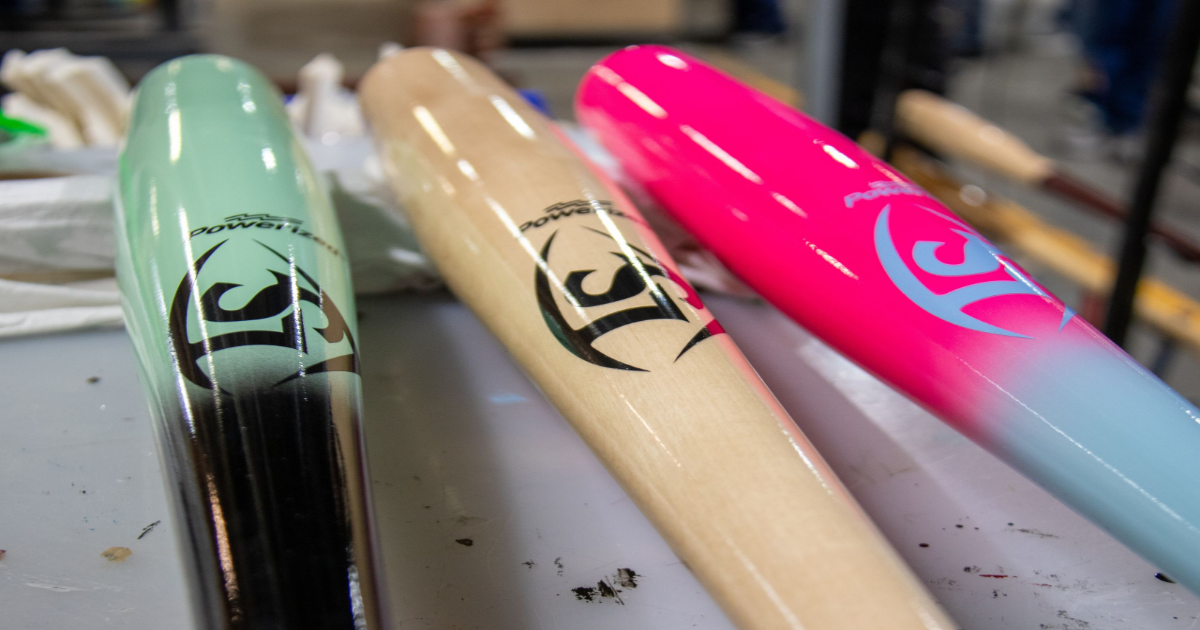
Image credit: (Photo Courtesy of Louisville Slugger)
It took mere hours to turn the story of the New York Yankees and their torpedo bats into a national phenomenon. And it only took a few days to take that intense interest and create a retail success story.
After the opening weekend of the MLB season saw a barrage of Yankees home run get credited to the torpedo bat, it fueled the interest of hitters, both professional and otherwise. How long after Saturday’s success was the torpedo bat a retail thought for Louisville Slugger?
“Monday morning,” Bobby Hillerich, Slugger’s vice president of manufacturing and operations for wood bats, told Baseball America. “It went from something we had been messing with for four years to we have orders from retailers that pretty much say that we will take them in any supply you can get them, as fast as you can.”
Slugger isn’t the only one. Marucci Sports’ Victus had its version of the torpedo bat available for retail the week after opening weekend too, and bat makers from large to small across the country were scrambling to get the retail side going.
Hillerich says the orders are coming fast and furious, from Major League clubs to elite travel ball teams. Slugger is hearing from coaches and general managers at a variety of levels, high schools and even the Savannah Bananas. Dick’s Sporting Goods contacted Wilson, owners of Slugger, and wanted 1,000 bats shipped immediately, with another 5,000 as fast as they could get them.
“It leapfrogged everything that we already had on order,” Hillerich said. “They said defer those; this is the most important.”

The torpedo bat is a shape, more than anything, one that moves some of the mass of the bat away from the end toward the sweet spot. It also isn’t brand new, even if it feels like it. Hillerich remembers a team coming to him in 2021 with some ideas about how to engineer bats. Bobby worked with his brother, Brian Hillerich, Slugger’s CNC programmer and model maker, to discuss with the team what was possible. They produced five or six torpedo-style models. Not much came of it then.
In November 2023, Slugger made its first player-specific model that was used during spring 2024, but it was discarded. Cody Bellinger was introduced to the idea when with the Chicago Cubs but he also put it aside. Bellinger then tried an updated version with the Yankees and together with Austin Wells “absolutely crushed it with our bats,” Bobby Hillerich said. “That lit the fire.” Other players using the Slugger version of the torpedo design included Elly De La Cruz and Nico Hoerner.
With a handful of Yankees players swinging the shape from a mix of bat makers, it wasn’t a one-hit wonder.
To capture on the craze, Slugger created the TPD1, a $170 offering, that is “pretty much a culmination of everything that we have learned by making the first 40 models and generalizing it so the average player can utilize it,” Bobby Hillerich said.
Bobby and Brian worked together to craft the TPD1 and tested it out in the Slugger hitting lab. It performed, so the Wilson executives signed off on it and the retailers jumped on it. Now just one of roughly 4,000 unique models in the brand’s 141-year history, the TPD1 has garnered 1,500 website pre orders before the bat was even live on the site. It will start shipping the week of April 7. The TPD1 maple bat comes in 31, 32, 32.5, 33, 33.5 and 34-inch lengths.
Bobby Hillerich says that the TPD1 isn’t just a standard model with the end turned down, instead a bat with an increased diameter where it needs to be. “We are putting a lot into making these models,” he says.
A standard bat design features a narrow handle that flares out to a barrel diameter that runs to the end of the bat. A torpedo style narrows before reaching the end of the bat, moving more mass into the sweet spot. At the big-league level, every single sweet spot is customized to the individual player, based on analyzing thousands of lines of data and hit-tracking information. The bats are still legal because they adhere to the guidelines of being a single piece of solid, round wood within the allowable diameter and length.
The TPD1 uses billets selected based on weight and then goes through the CNC machine for measurements down to the millimeter. The bat undergoes the same hardening and finishing process as every Prime wood bat, complete with Professional Series Finish and UV light treatment.
In less than one week, the torpedo-style bat has gone from an unknown to the most popular model across a range of suppliers.
Tim Newcomb covers gear and business for Baseball America.
